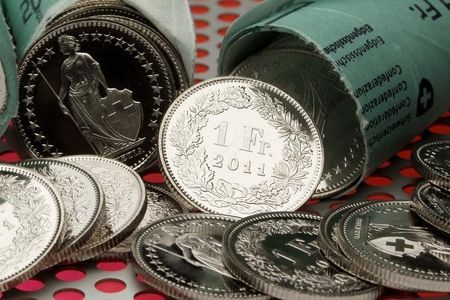Forex
UBS sees Swiss franc on backfoot, predicts Fed rate cuts

UBS released a report analyzing the impact of the Swiss National Bank’s (SNB) unexpected March rate cut on currency markets. The SNB’s early action, ahead of other major central banks, sparked a flurry of carry trades, leading to a significant weakening of the Swiss franc against major currencies, particularly the euro. The yield differential between the Swiss franc and the euro, now over 200 basis points, has fueled a surge in the pair.
Market futures suggest a substantial build-up of short positions in the Swiss franc, indicating downside risks for the exchange rate. However, UBS anticipates that these short positions will likely cap the upside of the USDCHF pair around the 0.92 level.
The Swiss economy is projected to maintain a growth rate of around 1.5%, while U.S. growth is expected to slow from 2.4% this year to 1.4% next year. The SNB is predicted to further reduce rates by 50 basis points by September, holding rates at 1% through the forecast horizon.
UBS also forecasts the Federal Reserve to commence rate reductions in September, totaling 100 basis points by June 2025. This policy shift is expected to keep the Swiss franc under pressure until the Fed’s rate cuts later in the year.
The report notes that the outcome of the U.S. election, whether a win by Biden or Trump, is unlikely to significantly affect the U.S. dollar, as many of Trump’s policies have already been adopted by the Democratic leadership.
The report further discusses how geopolitical tensions surrounding the U.S. election could influence currencies. An increase in tensions might inflate the Swiss franc, while heightened military rhetoric traditionally benefits the U.S. dollar, affecting the USDCHF to a lesser extent.
In terms of investment implications, UBS anticipates the USDCHF to remain above 0.90 in the coming months, with a potential decline as the Fed starts to cut rates. The firm identifies support for the USDCHF around 0.85 and resistance around 0.92.
The report concludes that an uptick in global growth could bolster the euro and, to some extent, the Swiss franc relative to the U.S. dollar.
This article was generated with the support of AI and reviewed by an editor. For more information see our T&C.

 Forex3 years ago
Forex3 years agoForex Today: the dollar is gaining strength amid gloomy sentiment at the start of the Fed’s week

 Forex3 years ago
Forex3 years agoUnbiased review of Pocket Option broker

 Forex3 years ago
Forex3 years agoDollar to pound sterling exchange rate today: Pound plummeted to its lowest since 1985

 Forex3 years ago
Forex3 years agoHow is the Australian dollar doing today?

 Cryptocurrency3 years ago
Cryptocurrency3 years agoWhat happened in the crypto market – current events today

 World3 years ago
World3 years agoWhy are modern video games an art form?

 Commodities3 years ago
Commodities3 years agoCopper continues to fall in price on expectations of lower demand in China

 Economy3 years ago
Economy3 years agoCrude oil tankers double in price due to EU anti-Russian sanctions


























